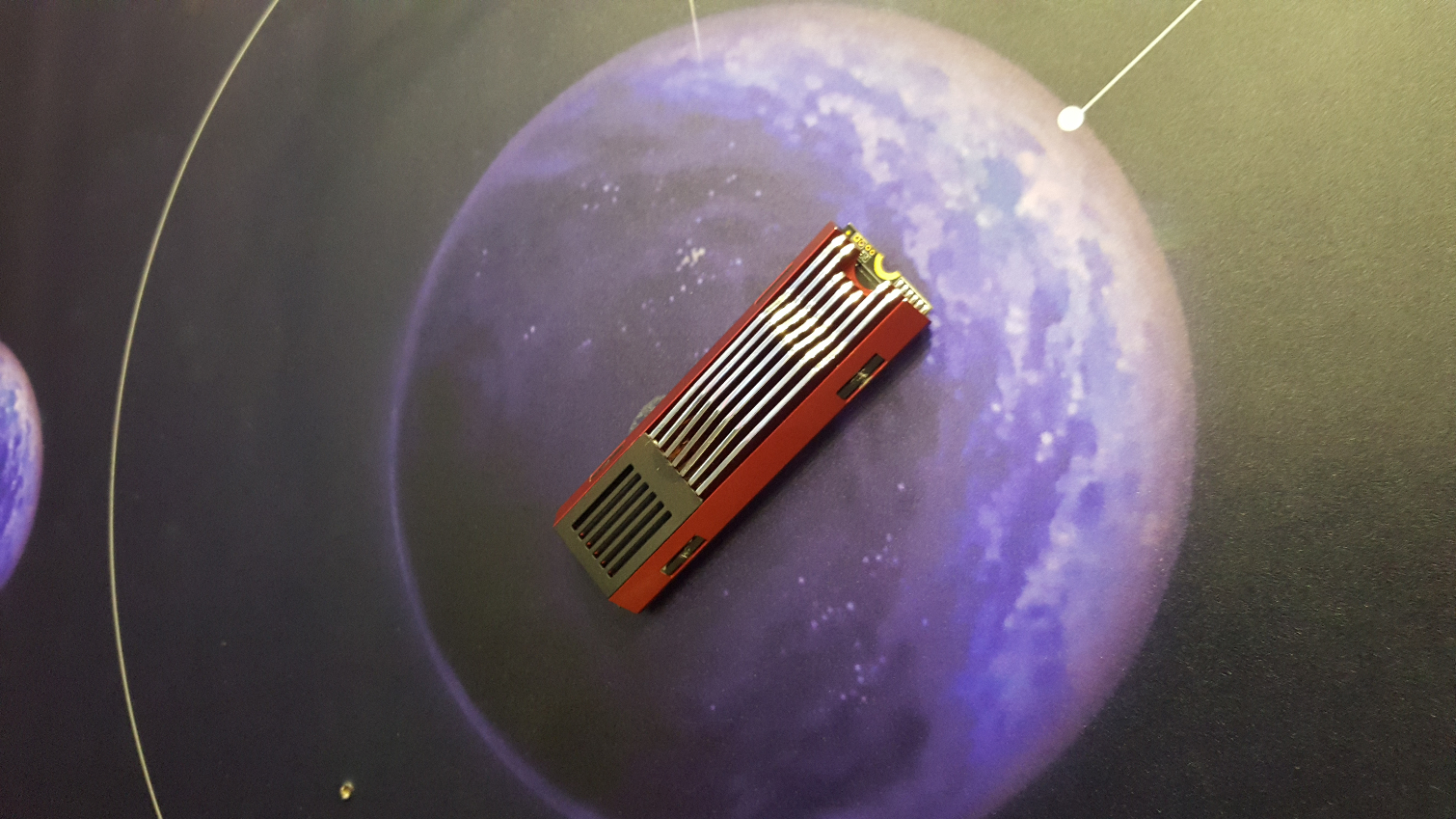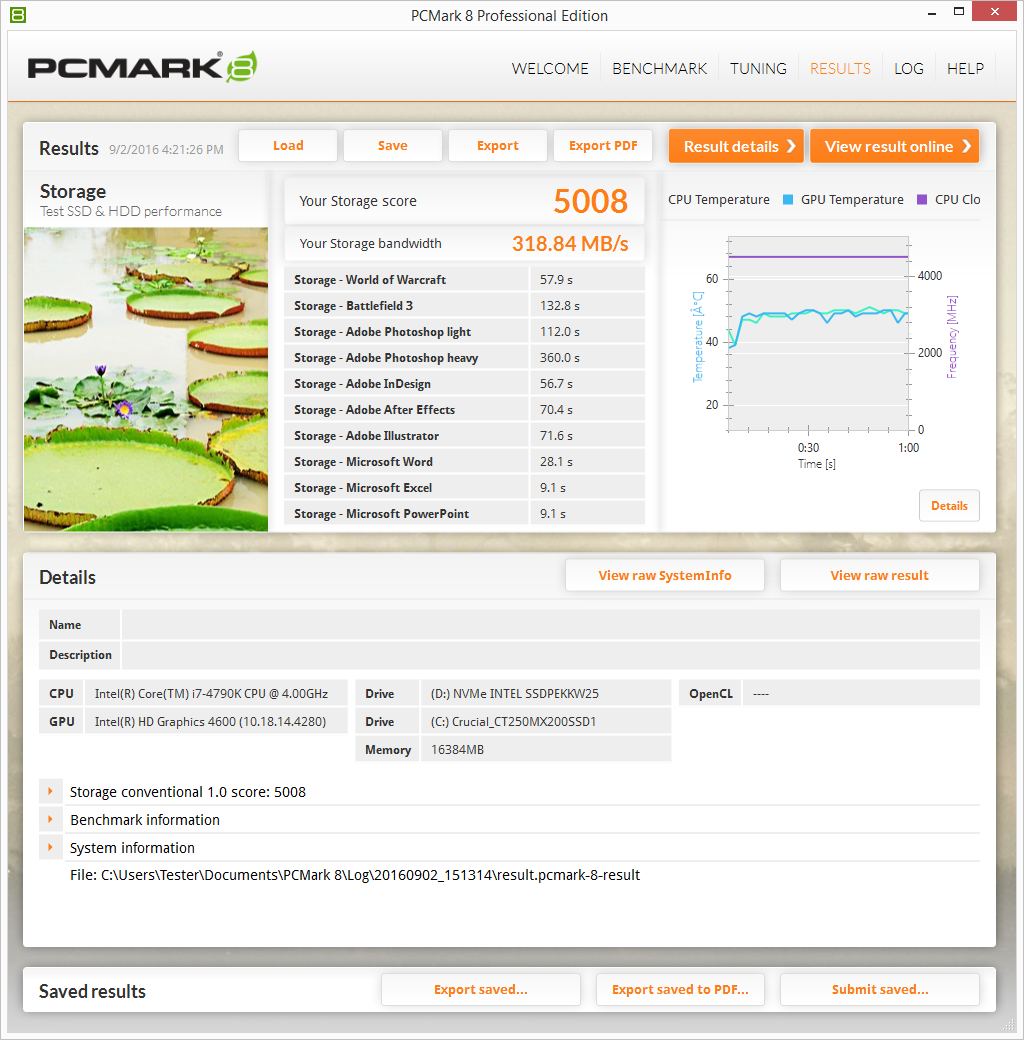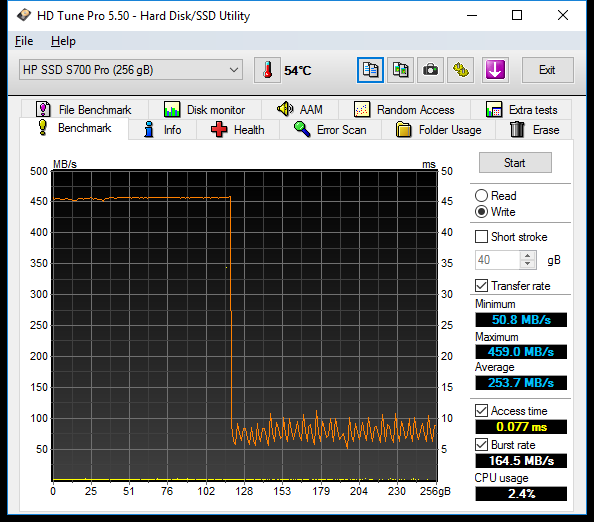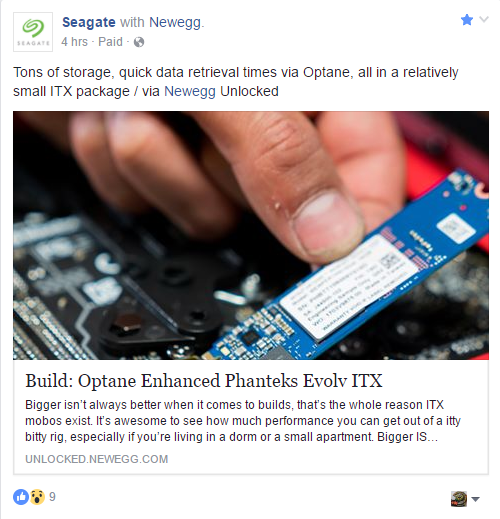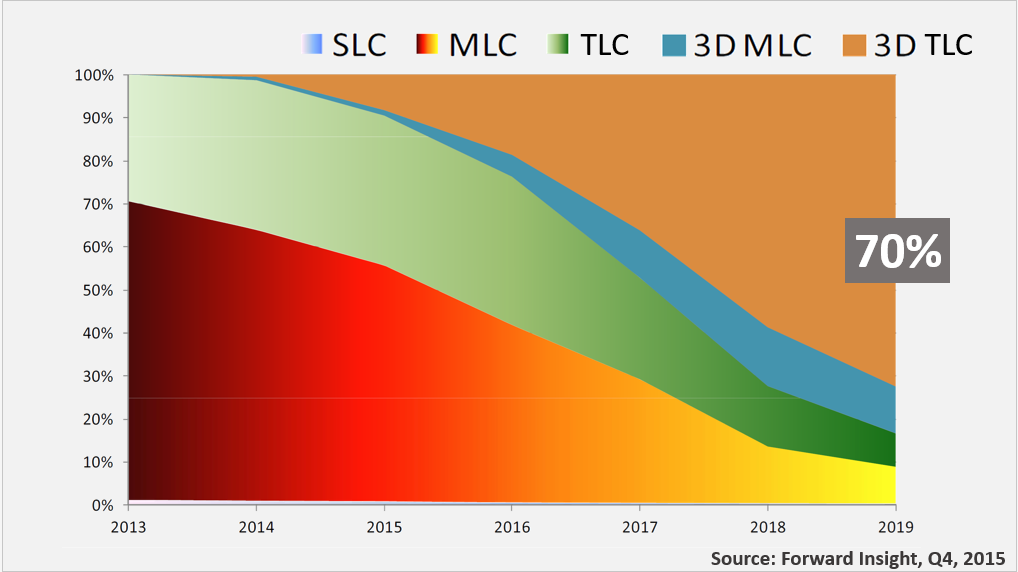Flash Industry Trends Could Lead Users Back to Spinning Disks
If you already own an SSD produced in the last five years, you may want to hold onto it. Next generation products will shoot for the moon on paper but fall well short of leaving the atmosphere. For the last decade we've watched the technology progress, but at the same time, meaningful growth has slowed or stalled due to cost-saving measures in NAND and controller technologies.
Early adopters, along with data centers and enterprise customers, played a large role in funding nearly all of the last decade's NAND development. The decision to purchase these products was due to how dissimilar they were from HDDs in terms of performance and reliability.
Yet over the last two years, the trend has been to slow performance to reduce costs. The more the technology is neutered, the closer to hard disk performance we see. On the controller side we've seen the number of processor cores and channels from each controller to the NAND flash shrink. On paper the new flash is faster than the old flash, so it's possible to achieve the same performance with fewer channels, but the larger die sizes also give us less parallelization. On the flash side, the move to more cost efficient 3-bit per cell (TLC) has delivered less sustained performance for heavy workloads that take longer to complete. Those are the same workloads early adopters chose flash in the first place.
SLC buffers, user-data in DRAM, and other technologies have hid many of the shortfalls of modern low-cost SSDs from many people, but power users can spot the difference between older and newer products. During this time, you still had an option to purchase higher cost MLC-based SSDs even though the number of products had declined. In the trailing end of 2017, however, those products will virtually disappear and you'll be forced to seek out alternatives.
A Technology Comparison
| Type | Capacity Per Cell | R/W Speed | R/W Cycle | Price |
|---|---|---|---|---|
| SLC | One Bit | Fast | 100,000 | High |
| MLC | Two Bit | Middle | 3,000 - 10,000 | Middle |
| 3D TLC | Three Bit | Slow | 1,000 - 3,000 | Middle |
| TLC | Three Bit | Slow | 800 - 1,000 | Low |
At its most affordable point, you could purchase a 240GB single-level cell flash SSD for right around $200. That was right before SLC disappeared from all consumer-level SSDs. We would call the SuperSSpeed SLC SSDs an anomaly because they were produced in limited numbers and could not support widespread adoption even for enthusiasts. The SuperSSpeed SLC SSDs were the last gasp for the technology, and products with MLC are about to enter the same type of endangered species list. MLC is on the chopping block and will be phased out of production for consumer-level products in the second half of 2017.
The End Of The MLC Middle Ground
MLC had a great run. The technology made consumer SSDs affordable and was the springboard that made this storage technology possible for the consumer market. User demand for flash has forced companies to find new ways to increase bit output in the fabs to meet demand. The fabs have increased the production of dies, shrunk lithography, and increased density, but that's still not enough for 2017. TLC allows the fabs to increase bit output even more. The goal is to push the technology into more devices and increase market share over HDDs. The push for market share has decreased the divide in performance between flash and spinning disks.
The Rise Of Expensive TLC
The investment in 3D technology has been expensive for fabs. Samsung led the way and has shipped 3D V-NAND in several devices ranging from low-cost consumer and embedded products to massive-capacity enterprise disks. Samsung's V-NAND SSDs have cost more in retail than products shipping with planar (2D) technology from other companies.
Get Tom's Hardware's best news and in-depth reviews, straight to your inbox.
Toshiba will soon release BiCS FLASH, the company's name for 3D like V-NAND is for Samsung. Micron will also soon release second-generation 3D technology. Both next-generation technologies will come in the form of TLC at first, and we don't expect to see 3D MLC until 2018 from either company. Even when (or if in the case of Toshiba) we see new 3D MLC, it won't come to the consumer market in a cost-competitive form.
We were told the new Plextor M8Se with TLC will most likely cost more than the M8Pe with MLC due to the current demand for flash. Plextor only has a few M8Pe SSDs left with planar MLC, and once they're sold the series will be gone forever. Other companies are in the same boat and will have discontinued MLC products available in the channel while new, more expensive TLC-based products come to market.
The 3D Endurance Myth
When companies talk about upcoming 3D TLC, the word "endurance" always enters the discussion. Vertically stacked TLC does increase endurance over planar 2D TLC, but the gain isn't as high as you might expect. We had two engineers tell us at Computex that Micron 64-layer TLC carries between 1,000 and 1,500 P/E cycles using their testing models. The Micron 256Gbit (Gen 2) TLC is still early but it's not a good sign for users. Neither Toshiba nor Micron want to discuss endurance with us at the die level; all endurance talk comes at the device level, where powerful error correction technology plays a large role. Planar MLC devices didn't use LDPC, an advanced form of error correction technology, but the controllers did run less powerful BCH ECC. At this time, long endurance is a meaningless checkbox, like a used car sale person might list "has tires" as a feature. We were told Toshiba's upcoming BiCS FLASH has higher endurance compared to Micron's second generation 3D, for example, but the marketing language will be very vague on retail products. Don't expect anything greater than planar MLC endurance even with more powerful error correction that consumes more power.
Performance Increases Come In Baby Steps
The Intel SSD 600p is a very good indicator of the performance users will see in future . The drive features 3D TLC paired with a low-cost NVMe controller. In our reviews of the series we found the performance to be better than any SATA SSD ever shipped for most users, but the sustained write performance is lower than even mainstream SATA SSDs with MLC flash. Most users will see a performance increase in daily use software like Office, games, and other regular applications that mainly read data from the drive.
If your workload involves write intensive tasks, then next-generation SSDs with TLC NAND and low-cost controllers will be a step backwards even if you use the advanced NVMe protocol. Compounding the issue is the rise in HDD performance. This year we measured several hard disk drives with 200-250MBps sequential write speeds and several more TLC-based SSDs with only 50-100MBps in the same workloads.
Fixing Flash
You can drive your car with three wheels, but what happens when you only have two? The problem with low-cost SSDs is the controllers. We've already talked about the number of channels to the flash, but the processing power has shrunk as well. Phison still has controllers with 4 cores on the roadmap, but Silicon Motion, Inc. and Marvell moved to dual-core controllers, and we've yet to see high-performance models on the release schedule with more cores. In contrast, Samsung's Polaris controller has five cores, with dedicated roles for each.
Background activity takes a lot of processor clock cycles and two cores is just not enough to keep performance high. Most consumers purchase smaller SSDs and then use much of the available capacity. This causes the flash processor to work harder to manage the data on the drive. You will get higher performance with a larger drive using less space on the flash. The other option is for controller designers to build products with more cores that can run the background activity without a significant effect on foreground performance. Companies need to mask native TLC write performance better or lose customers who are willing to pay more for a superior product.
More cores means more heat, and that's a bigger problem for small M.2 devices with less circuit board area to help cool the controller. We've seen a few NVMe SSDs, even in the M.2 form factor, ship with heat sinks to take up the slack and increase surface cooling area. In our testing we found it doesn't take a lot of aluminum to keep temperatures in check, but it does require some effort to incorporate the additional hardware. A little bit really does go a long way.
Alternatives
The more we test Intel's Optane Memory the more we like it. At this point we would recommend Optane Memory (the cache NVMe SSD) paired with a 7,200RPM hard drive over a 1TB TLC SSD. And we're not the only ones to notice the performance benefits; Seagate has a large campaign on social media promoting Optane Memory.
Just to make it clear, the hard drive companies are promoting Optane Memory in order to sell hard drives paired with the technology to deliver a superior user experience. It's not clear if Intel pitched in ad dollars, but Optane Memory has brought HDDs back into the storage conversation. Many of us moved hard drives to a cold storage role as secondary disks or for NAS appliances, but the empire strikes back.
Another option comes from the second-hand market, where lightly used enterprise SSDs sell for pennies on the dollar. This has always been an option for power users but we expect to see more users to take a look at EBay before buying retail. In the image above we see an Intel DC S3510 480GB SSD with MLC flash selling for the price of a new 512GB class TLC-based consumer SSD. There are a number of very high performance NVMe SSDs also available but you need to understand the risks involved going down this path. Enterprise SSDs require additional cooling, and warranty claims may be denied from third-party sellers. Still, enterprise SSDs are built to a higher standard, and they often include host power failure protection. They also consume more power, so notebook users will need to be selective and know what they are getting into.
New enterprise-class SSDs cost significantly more than consumer TLC-based SSDs, but the prices are often less than you may imagine. Newegg, CDW, and Amazon carry these products, and you can often find products two or three generations removed from the current one at attractive price points. You aren't getting the latest enterprise technology, but the products are often superior to consumer SSDs selling today.
Final Thoughts
Many of the next-generation SSDs we've seen so far were designed to decrease costs. Performance is a secondary objective. The fabs will force 3D TLC on users and push for lower cost controller designs that further reduce performance in mixed and sustained workloads. If the controller designers don't push back with more efficient products, we expect a revolt from power users, gamers, and enthusiasts. That revolt will come in the form of Optane paired with spinning disks or used enterprise products purchased for workstation use. 3D TLC leaves a big hole at the upper end of the market where profits are higher than the low margin race to the bottom the inferior products target.

Chris Ramseyer was a senior contributing editor for Tom's Hardware. He tested and reviewed consumer storage.
-
none12345 One of the reasons i got a plextor mp8e over a samsung 960 was MLC v TLC. Its not quite as fast(but still fast), but higher endurance, better warrenty.Reply
Now im glad i got one last week, was going to wait, and if i had it woulda been gone. -
SuperFist Still happy with my Samsung 960 EVO 250GB M.2 NVMe SSD. Virus scanner takes 18-20 min with regular SSD and only 4-5 min with M.2 NVMe!Reply -
jaber2 I don't see a future for HDD, also why would I waste my only M.2 slot for Optane? HDD has moving parts and I know from experience things that move eventually break.Reply -
AgentLozen In this article the author claims that decent MLC solid state drives are being phased out in favor of cheaper, inferior products.Reply
Chris Ramseyer said:3D TLC leaves a big hole at the upper end of the market where profits are higher than the low margin race to the bottom the inferior products target.
I interpret this as a warning. "Hey everyone! SSDs are going to suck in the near future!" Call me an optimist, but I think that the majority of the consumer user base will be just fine. Most people that will benefit from cheap SSDs won't miss MLC NAND. I might even say that only in certain enterprise applications will there be any sort of problem. Even then, doesn't Samsung produce really nice, modern M.2 SSDs equipped with MLC memory? Additionally, 3D XPoint is still an early technology that has massive potential as it evolves.
This article seems to paint this hellish dystopia in the alternate 1985 where Biff Tannon lives in a massive casino and the streets are ruled by biker gangs. Street merchants peddle QLC SSDs that have read/write speeds and endurance lower than CDs from 1996. I think that 3D TLC is good enough for 90% of consumers and 3D MLC NAND will offer the performance enthusiasts are looking for until phase change memory like 3D XPoint matures enough to replace flash completely. -
JamesSneed This article makes a really poor argument for Optane except on a very low budget. Honestly I don't understand this perspective and somewhat feels like sneaky advertising. Ill be putting a Samsung 960 Pro in my next built in a couple weeks which uses good MLC NAND and has a good controller.Reply -
Brian_R170 My prediction is that when Intel releases consumer Optane SSDs (or Micron releases consumer QuantX SSDs), competitors will respond with high-performance NAND SSDs with price and performance somewhere between the run-of-the-mill 3D TLC NAND and Optane, and the game will be afoot again.Reply -
Brian_R170 Reply19796431 said:This article makes a really poor argument for Optane except on a very low budget. Honestly I don't understand this perspective and somewhat feels like sneaky advertising. Ill be putting a Samsung 960 Pro in my next built in a couple weeks which uses good MLC NAND and has a good controller.
If I'm reading the article correctly, it's saying that it won't be long before all available consumer SSDs fall into the same performance category that average SSDs are in today. I.e. you won't be able to buy an 960Pro, etc. At that point, an Optane cache paired with a mechanical hard drive would be compelling for many users. Of course, the real question is whether this scenario will actually play out. I personally wouldn't bet on it.
-
JamesSneed Reply19796961 said:19796431 said:This article makes a really poor argument for Optane except on a very low budget. Honestly I don't understand this perspective and somewhat feels like sneaky advertising. Ill be putting a Samsung 960 Pro in my next built in a couple weeks which uses good MLC NAND and has a good controller.
If I'm reading the article correctly, it's saying that it won't be long before all available consumer SSDs fall into the same performance category that average SSDs are in today. I.e. you won't be able to buy an 960Pro, etc. At that point, an Optane cache paired with a mechanical hard drive would be compelling for many users. Of course, the real question is whether this scenario will actually play out. I personally wouldn't bet on it.
Yeah I understood and its just rubbish. There will always be pro / server grade SSD's and people willing to pay extra for them. Optane has its place but this article is way over optimistic on what Optanes place is today or in the near future.
-
jonnyhuk2 Back in 2011, I built my Z68 motherboard Sandy Bridge PC (which I still use today). That supported "Smart Response Technology" where you could have a SATA SSD up to about 60GB acting as a cache for your mechanical hard drive. It appeared to the user as a single drive but you had a fast cache on your HDD. How does Optane differ from this? It sounds like Intel have re-invented their own invention!!!Reply -
CRamseyer Samsung hasn't talked much about 64-layer MLC but hasn't hinted MLC will go away. Given the lead the company has over IMFT and Flash Forward in TLC I don't see Samsung MLC sticking around for much longer. We will know more later this year when we talk to them at Flash Memory Summit.Reply
If you followed our coverage at Computex then you already know what's coming from the other companies. TLC, TLC, TLC, and DRAMless TLC. All MLC is out, period. Once the production lines start moving 3D TLC the planar flash is gone except for special contracts where companies have a guaranteed supply for previously validated parts. Think aerospace, automotive and so on. Ideally the industry will bring back MLC but at this point its as likely as bringing back SLC.
Since the original review we've spent a lot more time with Optane Memory. With a handful of drives in hand including the 16GB model we're pounding them. It's difficult to hit a workload that's not accelerated even with a large game library. It's more impressive than we thought after our first go around with just a few days to test the feature.
We will have a follow up article soon with our findings.
